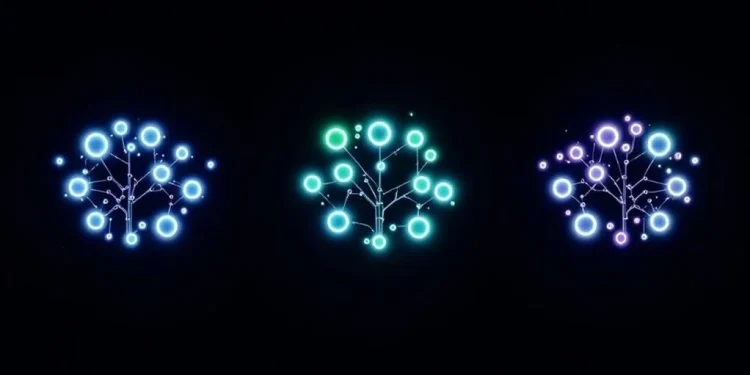A disjoint set organizes elements into separate, non-overlapping groups where each element belongs to exactly one group. It’s similar to how students in a school are divided into different classrooms – no student can be in two classes at once. The structure supports three main operations: creating sets, combining sets, and finding which set contains an element. This efficient data structure plays an essential role in solving complex computer science problems.

A disjoint set represents a collection of subsets where no elements overlap between different subsets. When mathematicians and computer scientists talk about disjoint sets, they’re referring to a way of organizing elements where each item belongs to exactly one group. Think of it like sorting students into different classrooms – each student can only be in one classroom at a time, and all students together make up the entire school. Root node identification is critical for maintaining the integrity of disjoint sets.
Disjoint sets organize elements into exclusive groups, like students assigned to different classrooms – each belonging to exactly one group.
In computer science, this concept is often implemented using a special data structure called a union-find or merge-find set. This structure helps manage and organize these non-overlapping groups efficiently. It supports three main operations: creating new sets, combining two sets into one, and finding which set contains a specific element. These operations are so efficient that they take almost constant time to perform. Like modular design principles in system architecture, disjoint sets break complex structures into manageable, independent parts. The fundamental principle that the union of all subsets equals the original set ensures data integrity.
The way disjoint sets work is through a tree-like structure where each subset has a root node that acts as its leader. When you want to know if two elements are in the same group, you simply check if they have the same root node. It’s like following a family tree back to find a common ancestor. This system makes it easy to keep track of which elements belong together without any confusion or overlap.
Disjoint sets have many practical applications in computer science. They’re especially useful in graph algorithms like Kruskal’s algorithm, which finds the shortest path to connect all points in a network. They’re also used in image processing to separate different parts of an image, and in network systems to track which computers are connected to each other.
The mathematical foundation of disjoint sets guarantees that when you divide a larger set into smaller groups, you don’t lose any elements, and no element appears in more than one group. This property makes them perfect for solving problems where you need to organize items into distinct categories without any overlap.
Computer scientists have developed clever ways to make operations on disjoint sets very fast. They use techniques like path compression and union by rank to guarantee that finding and combining sets happens quickly. These optimizations make disjoint sets a powerful tool for solving complex problems in areas like computer networking, artificial intelligence, and data processing where efficient organization of information is essential.


